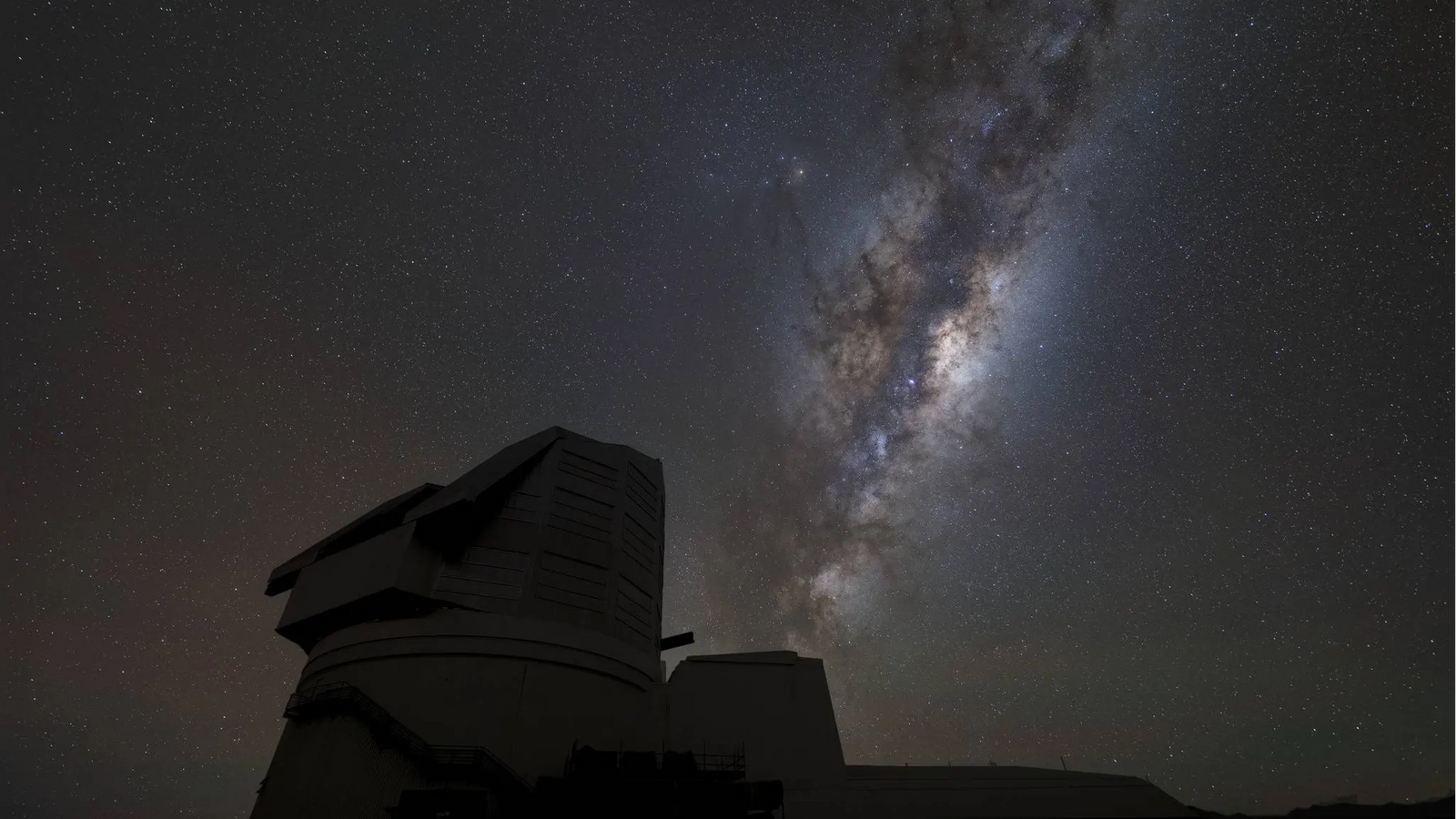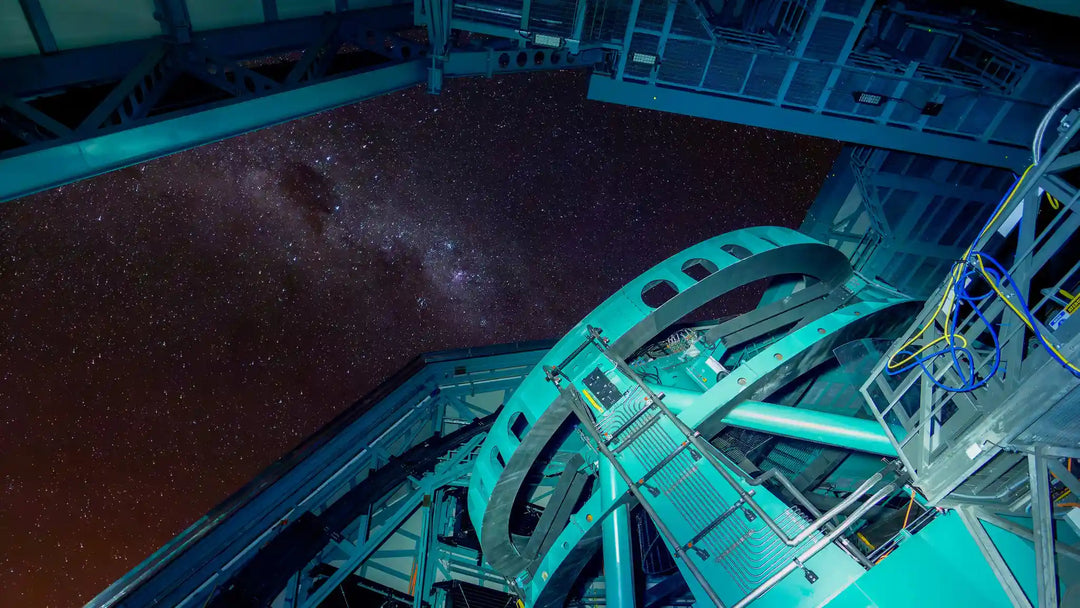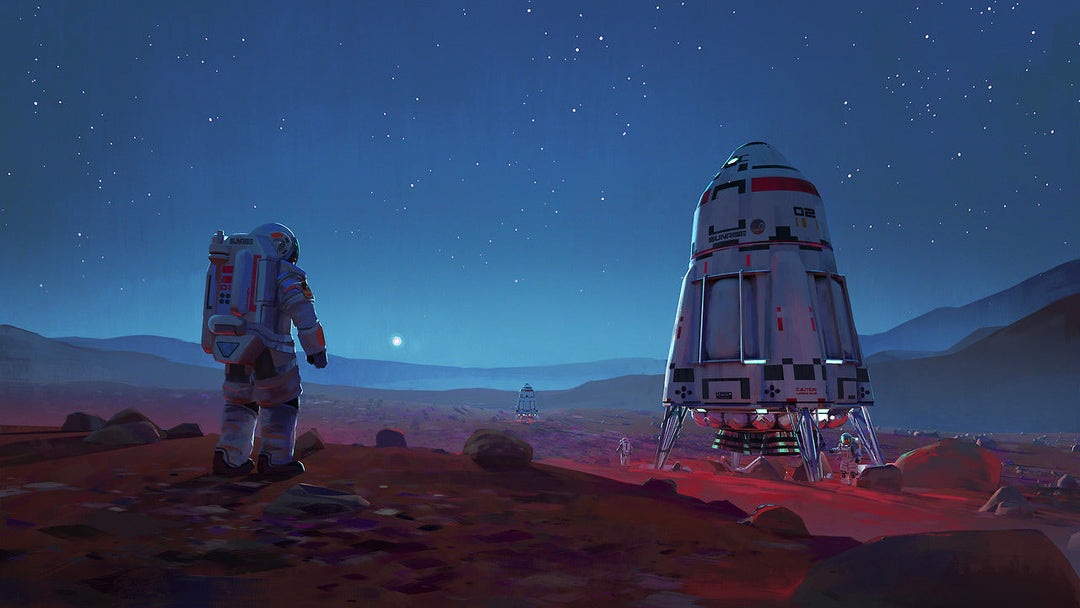Vera C. Rubin Observatory: Revolutionizing Astronomy Through the World's Most Advanced Telescope [All You Need To Know]

Welcome to the forefront of astronomical discovery! This article will take you on a comprehensive journey through the Vera C. Rubin Observatory's mission, its colossal camera, strategic location, and what we can expect from its "first light" and beyond. Get ready to explore the future of astronomy!
Introduction: The Dawn of a New Astronomical Era
The Vera C. Rubin Observatory stands as humanity's most ambitious window into the cosmos, poised to revolutionize our understanding of the universe. Located atop Chile's Cerro Pachón mountain, this groundbreaking facility represents a huge investment in scientific discovery that will fundamentally transform astronomy for the next decade.
Named after pioneering astronomer Vera Rubin, who provided crucial evidence for dark matter's existence, this observatory isn't just another telescope—it's a time machine that will create the most comprehensive movie of the universe ever captured
NSF–DOE Rubin Observatory will capture more information about our Universe than all optical telescopes throughout history combined

What is the Vera C. Rubin Observatory?
The Vera C. Rubin Observatory , formerly known as the Large Synoptic Survey Telescope (LSST), is a joint initiative between the U.S. National Science Foundation (NSF) and the U.S. Department of Energy's Office of Science. This astronomical powerhouse combines three revolutionary components:
An 8.4-meter Simonyi Survey Telescope with innovative three-mirror design
The world's largest digital camera at 3.2 gigapixels
An advanced data management system capable of processing 20 terabytes nightly
At its core, the Vera C. Rubin Observatory is built around a monumental undertaking: the Legacy Survey of Space and Time (LSST) . This isn't your typical "point-and-stare" astronomy. Instead, the LSST is a 10-year endeavor to repeatedly survey the entire available southern sky, creating an unprecedented, deep, and wide-field dataset. Think of it as creating a "Google Earth" for the universe, but one that also shows you how everything moves and changes over time!
Meet Vera C. Rubin Observatory First Look Collection
What is the Vera C. Rubin Observatory Setting Out to Do? Mission & Scientific Goals
The observatory's primary mission is the Legacy Survey of Space and Time (LSST), a decade-long survey that will photograph the entire southern sky every few nights. This unprecedented undertaking will create a cosmic time-lapse revealing how the universe changes over time.
The Vera Rubin Observatory mission centers on four fundamental science goals that will reshape our understanding of the cosmos
1. Probing Dark Energy and Dark Matter
The observatory will study billions of galaxies to understand the mysterious forces comprising 95% of the universe. Through weak gravitational lensing and other techniques, scientists aim to constrain dark energy parameters with unprecedented precision. By precisely mapping the distribution of matter and the expansion history of the universe, Rubin will provide crucial data to shed light on their nature.
Real-world impact: Understanding dark energy could reveal the ultimate fate of our universe – will it expand forever, or eventually collapse?
2. Taking Inventory of the Solar System
From potentially hazardous near-Earth asteroids to distant, icy objects beyond Neptune, Rubin will be a discovery machine for our cosmic backyard. The survey expects to find:
6 million Solar System objects over ten years
Potentially hazardous asteroids that could threaten Earth
Evidence for the hypothetical Planet Nine
Real-world impact: This is vital for planetary defense, giving us an early warning system for potential asteroid impacts. Imagine the peace of mind knowing we're better prepared!
Dive Into The Deep Space
3. Exploring the Transient Optical Sky
The universe is anything but static. Supernovae (exploding stars), gamma-ray bursts, and other fleeting cosmic events occur constantly. Rubin's rapid scanning capability will detect these "transients" in real-time, allowing astronomers worldwide to follow up quickly.
With its rapid survey capability, the observatory will detect approximately:
- 10 million supernovae over the survey lifetime
- 10 million alerts per night for changing objects
- Gravitational wave counterparts and other transient phenomena
Real-world impact: Catching these events as they happen provides critical insights into stellar evolution, extreme physics, and the formation of heavy elements.
4. Mapping the Milky Way
Our own galaxy, the Milky Way, is a complex spiral. Rubin will observe billions of individual stars, providing an unparalleled "fossil record" to understand its structure, formation history, and interaction with neighboring galaxies.
The survey will create the most detailed map of our galaxy ever assembled, studying:
- 17 billion stars and their properties
- Galactic structure and formation history
- Stellar populations and chemical evolution
As Dr. Zeljko Ivezic, Director of the Rubin Observatory, stated, "Rubin Observatory will deliver a 500-petabyte set of images and data products that will address some of the most pressing questions about the structure and evolution of the universe."
This isn't just about pretty pictures; it's about a fundamental shift in how we do astronomy – from focused observations to a continuous, wide-field survey that unlocks a wealth of dynamic information.
Rubin Observatory: The Planet Nine Connection
One of the most exciting aspects of the Vera Rubin Observatory Planet 9 search involves the hunt for a hypothetical ninth planet in our solar system.
Mike Brown, the Caltech astronomer who proposed Planet Nine, expressed optimism about the observatory's capabilities: "If you were to hand me a big wad of cash and say, 'Go build a telescope to go either find this Planet 9 or find the best evidence possible for Planet 9,' I would probably go and build the Vera Rubin Observatory".
The observatory's unique combination of sensitivity, speed, and sky coverage makes it ideally suited for this search. As Scott Sheppard from Carnegie Science noted, there's a "70-80% chance of finding Planet Nine with this observatory".
Vera Rubin Observatory Location: Why Chile's Cerro Pachón?
Strategic Positioning in the Atacama Desert
The Rubin Observatory location at Cerro Pachón in Chile's Coquimbo Region wasn't chosen by chance 1 . Perched at 8,684 feet (2,647 meters) above sea level, this site offers exceptional astronomical conditions:
More than 270 clear nights annually
Minimal light pollution in one of the world's driest deserts
Stable atmospheric conditions crucial for precise observations
Strategic southern hemisphere position for comprehensive sky coverage
The site coordinates (30°14'40.68"S, 70°44'57.90"W) place it alongside other world-class observatories, including Gemini South and the Southern Astrophysical Research Telescope. This location enables the observatory to survey declinations from -72° to +12°, covering approximately 18,000 square degrees of sky.

Infrastructure and Accessibility
Unlike remote mountaintop observatories, Cerro Pachón offers crucial logistical advantages. The Rubin Observatory Chile facility benefits from:
High-speed fiber optic connections for massive data transfer
Proximity to La Serena base facility (100 kilometers away)
Existing infrastructure reducing construction complexities
Access to skilled technical workforce in the region
The strategic choice of the Rubin Observatory location ensures optimal observing conditions for its decade-long survey.
The Revolutionary Vera Rubin Observatory Camera
At the heart of the Vera C. Rubin Observatory lies its truly astonishing instrument: the LSST Camera. This isn't just any camera; it's the largest digital camera ever (to date) built for astronomy.
The Vera Rubin Observatory camera represents the pinnacle of astronomical imaging technology, holding two Guinness World Records:
Highest-resolution digital camera with 3.2 billion pixels
Largest optical lens measuring 1.57 meters (61 inches) acrossTechnical SpecificationsThe LSST Camera's impressive specifications make it a marvel of engineering
Impressive? Prepare to have your mind blown:
- Megapixels Galore: The LSST Camera boasts a staggering 3200 megapixels (3.2 gigapixels). To put that into perspective, you'd need about 1500 high-definition TV screens just to view one full image!
- Size and Scope: The camera itself is the size of a small car, weighing over 3 tons (approximately 6,600 pounds). Its focal plane is a mosaic of 189 individual charge-coupled device (CCD) sensors, each larger than professional-grade medium-format sensors.
- Unprecedented Field of View: Coupled with the Simonyi Survey Telescope , the LSST Camera can image an enormous patch of sky – about 45 times the area of the full Moon in a single exposure! This wide field is crucial for its survey mission.
- Rapid-Fire Imaging: The camera is designed for speed. It will capture successive images and move to a new area of the sky quickly, allowing it to scan the entire visible southern sky every few nights. This rapid cadence is what makes the "cosmic movie" possible.
- Multi-Wavelength Vision: The camera observes in six different spectral bands (u, g, r, i, z, y), ranging from near-ultraviolet to near-infrared light. This allows astronomers to see different aspects of celestial objects and analyze their properties in detail.
Technical Specifications
The LSST Camera's impressive specifications make it a marvel of engineering:
- Length: 14.73 ft (4.49 m)
- Height: 5.5 ft (1.65 m)
- Weight: 6,635 lbs (3,010 kg)
- Pixel Count: 3,200 megapixels
- Wavelength Range: 320–1,050 nm
- Field of View: 3.5 degrees
The Rubin Observatory's data management system represents a technological marvel capable of handling astronomical amounts of information:
20 terabytes collected nightly
60 petabytes total raw data over 10 years
500 petabyte dataset including processed products
To put this in perspective, "Rubin Observatory generates about 20 terabytes of data every 24 hours—it would take you over three years of watching Netflix" to consume equivalent data.

Focal Plane Innovation
The camera's focal plane consists of 189 charge-coupled device (CCD) sensors arranged in 21 3×3 square arrays called "rafts". This sophisticated system:
- Operates at -100°C (-148°F) to minimize electronic noise
- Captures images covering 40 times the area of the full moon
- Reads out 3.2 billion pixels in just 2 seconds
- Uses six optical filters (u, g, r, i, z, y) for comprehensive spectral coverage
As described in a recent New York Times report, "each image takes 15 seconds to capture and only two seconds to download", demonstrating the camera's remarkable efficiency.
When Will Vera Rubin Observatory Open? First Light and Operations
Milestones & Timeline
The Vera Rubin Observatory first light journey reached several critical milestones in 2024-2025:
April 2024: LSST Camera construction completed after two decades of development
May 2024: Primary/tertiary mirror received first reflective coating
Summer 2024: Camera successfully shipped from SLAC to Chile
January 2025: First successful on-sky test with Commissioning Camera
June 23, 2025: Public release of first spectacular images
The anticipation surrounding the Vera C. Rubin Observatory first light has been immense within the astronomy community. We've just witnessed a monumental step!
On June 23, 2025, the NSF-DOE Vera C. Rubin Observatory officially released its first imagery , showcasing cosmic phenomena captured at an unprecedented scale. This "First Light" event marked a significant milestone, a culmination of over two decades of planning and construction.
While these initial images are from commissioning and test captures, they offer a stunning preview of what's to come. Later in 2025, the Rubin Observatory will begin its primary mission, the Legacy Survey of Space and Time (LSST).
This means:
- Continuous Scanning: For the next 10 years, the observatory will ceaselessly scan the sky nightly.
- Real-time Data: It will generate around 20 terabytes of data per night and issue up to 10 million alerts within 60 seconds of detecting changes in the sky (like a new supernova!).
- Public Access (eventually): While initial data access is for scientists in the U.S. and Chile, there are plans for the data to become fully public after two years.
So, to answer "When will Vera Rubin Observatory open?", it has opened its eyes, and its full scientific operations for the LSST are set to commence in the second half of 2025. Get ready for a deluge of cosmic insights!
First Images Reveal Observatory's Power
The observatory's first public images, released on June 23, 2025, demonstrated its extraordinary capabilities:
2,104 new asteroids discovered in just 10 hours of observation
10 million galaxies captured in a single mosaic
Unprecedented detail in star-forming regions like the Trifid and Lagoon nebulae
"In just a 10 hour period, the National Science Foundation says that the Rubin Observatory discovered 2,104 never-before-seen asteroids in our solar system, including seven near-Earth asteroids", showcasing the facility's asteroid-hunting prowess.
Summary: Key Takeaways from the Vera C. Rubin Observatory
The Vera C. Rubin Observatory is a monumental achievement in astronomy, poised to redefine our understanding of the universe. Here are the key takeaways:
Revolutionary Survey: Its core mission is the 10-year Legacy Survey of Space and Time (LSST), creating a dynamic, ultra-high-definition "movie" of the southern sky.
Giant Camera: Features the LSST Camera, the world's largest digital camera with 3.2 gigapixels, capable of imaging an area 45 times the size of the full Moon in one shot.
Prime Location: Strategically built on Cerro Pachón in Chile, benefiting from high altitude, dry climate, and dark skies.
First Light Achieved: Officially released its first stunning imagery on June 23, 2025, with full LSST operations beginning later in 2025.
Key Science Goals: Aims to probe dark energy and dark matter, inventory the solar system (including the search for Planet 9 ), explore the transient sky, and map the Milky Way.
Data-Driven Astronomy: Will generate unprecedented amounts of data, revolutionizing how astronomers discover and analyze cosmic phenomena.
Expected Discoveries: 38 billion cosmic objects, including 20 billion galaxies, 17 billion stars, and millions of asteroids
Global Impact: International collaboration involving 30+ countries with democratized data access through cloud-based platforms
Frequently Asked Questions: You Ask, We Answer
Is the Vera C. Rubin Observatory still under construction, or is it fully operational?
The Vera C. Rubin Observatory is in its final stages of construction and commissioning. While it has just achieved "first light" with the release of its initial images on June 23, 2025, its full 10-year Legacy Survey of Space and Time (LSST) will officially begin operations later in 2025.
What is the primary difference between the Vera C. Rubin Observatory and other major telescopes like Hubble or James Webb?
While Hubble and James Webb are designed for deep, narrow-field observations of specific targets, the Vera C. Rubin Observatory (through its LSST) is designed for a wide-field, rapid-cadence survey of the entire observable southern sky. It's about capturing dynamic changes and building a massive, time-resolved catalog, rather than just taking single, extremely detailed snapshots of small areas.
What is the significance of the Vera C. Rubin Observatory being located in Chile?
The Rubin Observatory location in Chile's Cerro Pachón offers unparalleled observing conditions: high altitude minimizes atmospheric effects, the dry Atacama Desert ensures clear skies, and its Southern Hemisphere position provides optimal views of the galactic center and other key southern celestial objects.r
What makes the Vera Rubin Observatory camera so special?
The Vera Rubin Observatory camera holds two Guinness World Records as the highest-resolution digital camera (3.2 gigapixels) and features the world's largest optical lens (1.57 meters across). It can capture areas 40 times larger than the full moon in single exposures.
How will the massive amount of data from the LSST Camera be processed and managed?
The Vera Rubin Observatory will generate approximately 20 terabytes of data every night, equivalent to over three years of Netflix viewing. Over the 10-year survey, it will collect 60 petabytes of raw image data and is expected to be 500 petabytes dataset including processed products
What scientific discoveries are expected from the Vera Rubin Observatory?
The observatory expects to catalog 38 billion cosmic objects including 20 billion galaxies, 17 billion stars, 10 million supernovae, and 6 million solar system objects. It will revolutionize studies of dark matter, dark energy, and cosmic evolution.
How will the Vera C. Rubin Observatory help us understand dark energy and dark matter?
By precisely measuring the positions and brightnesses of billions of galaxies over a decade, Rubin will create an incredibly detailed map of the universe's large-scale structure. This allows scientists to study how galaxies cluster and how the universe has expanded over time, providing critical data to constrain models of dark energy and dark matter.
Will the Vera C. Rubin Observatory be able to find new planets beyond our solar system (exoplanets)?
While the Rubin Observatory is not specifically designed for exoplanet detection using methods like transit or radial velocity, its vast survey will likely discover many transient events, some of which could be related to exoplanets or their environments, especially through gravitational lensing effects. Its primary focus for solar system objects is within our own neighborhood.
Will the public have access to the images and data from the Vera C. Rubin Observatory?
Yes, all Vera Rubin Observatory data will be publicly available through the Rubin Science Platform. The observatory emphasizes democratized access to astronomical data, making it available to researchers worldwide within 24 hours of observation.
Is the Vera C. Rubin Observatory part of NASA?
The Vera C. Rubin Observatory is a joint program primarily funded by the U.S. National Science Foundation (NSF) and the U.S. Department of Energy (DOE). While it collaborates with many institutions and contributes to global astronomical understanding, it is not directly operated by NASA. NSF funding is managed by AURA, and DOE funding by SLAC National Accelerator Laboratory.
Sources
Vera C. Rubin Observatory Project Mission Statement, [24.06.2025]
Vera C. Rubin Observatory: Science Goals, [24.06.2025]
NOIRLab, Rubin Observatory Receives Two Guinness World Records for Its Camera and Lenses, [24.06.2025]
New Space Economy, A New Window on the Universe: The Vera C. Rubin Observatory, [24.06.2025]
SLAC National Accelerator Laboratory, LSST Camera: World’s largest camera for astrophysics, [24.06.2025]
NSF, NSF-DOE Vera C. Rubin Observatory, [24.06.2025]










![Vera C. Rubin Observatory: Revolutionizing Astronomy Through the World's Most Advanced Telescope [All You Need To Know]](http://astrography.com/cdn/shop/articles/vera-c.-rubin-observatory_main.webp?v=1751627507&width=1080)

Leave a comment